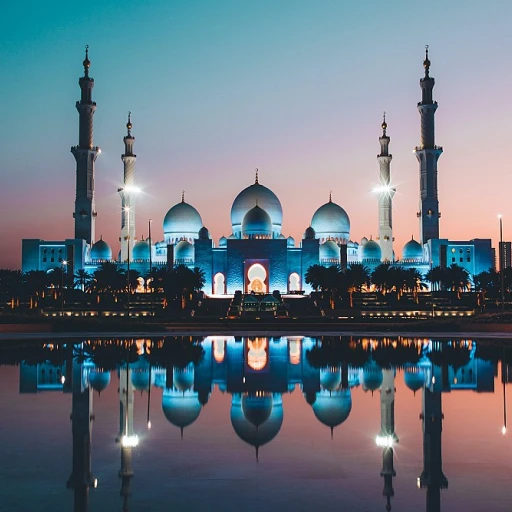The history of Maracanã Stadium
From vision to reality: building the Maracanã
When it comes to Brazil, there's no place more emblematic than the Maracanã Stadium in Rio de Janeiro. The journey of Maracanã began in 1947 when the Brazilian government decided to create a spectacular venue to host the 1950 FIFA World Cup. Conceived by a group of architects led by Marcio Kogan and Francisco Bolonha, the official name of the stadium was Estadio Jornalista Mario Filho, honoring the famous Brazilian journalist.
A colossal feat of construction
The construction of Maracanã was a monumental task. Over 1,500 workers contributed to the building of this grand stadium. The stadium's inauguration on June 16, 1950, was marked by a friendly match between Rio de Janeiro and São Paulo state teams, with an impressive attendance of approximately 200,000 spectators. This made Maracanã the largest stadium in the world at that time.
A gigantic stage for history
Maracanã quickly became a symbol of Brazilian football culture. One iconic moment that stands out is the final match of the 1950 FIFA World Cup, known as the 'Maracanazo,' where Uruguay shockingly defeated Brazil, etching a lasting memory in the hearts of football fans worldwide. This game attracted around 173,850 fans, a record that remains unbroken.
A lasting legacy
Construction and expansion didn’t stop after the initial build. The stadium has been refurbished and modernized multiple times to retain its crown. Significant renovations were implemented before hosting the 2014 FIFA World Cup and the 2016 Rio Olympic Games, ensuring the stadium complied with modern standards.
Century-old tales of the Maracanã
The Maracanã not only hosted monumental matches, but it also witnessed several significant cultural events. Frank Sinatra's 1980 concert, Tina Turner’s electrifying performances, and Paul McCartney's record-setting show in 1990 are just a few examples of its influence beyond football. Learn more about iconic venues like Maracanã and how to explore them.
Iconic matches and moments at Maracanã
Legendary games and unforgettable moments
Maracanã has been the stage for some of the most memorable moments in football history. One iconic match was the 1950 FIFA World Cup final when Brazil faced off against Uruguay. Over 200,000 spectators filled the stadium, making it the largest crowd to ever attend a football match. The match ended in a shocking 1-2 defeat for Brazil, a moment known as the Maracanazo. This event left a deep mark on Brazilian football culture.
Another unforgettable event was the 2014 FIFA World Cup final between Germany and Argentina. The match attracted nearly 75,000 fans to the newly renovated Maracanã stadium. Mario Götze's extra-time goal that led Germany to victory was a defining moment not only for the tournament but also for Maracanã's rich history.
Outside the realm of football, Maracanã hosted the opening and closing ceremonies of the 2016 Rio Olympic Games. With breathtaking performances and grandiosity, the stadium showcased Brazil's vibrant culture to the world.
In club football, Maracanã has witnessed titanic clashes between Rio de Janeiro's biggest teams, Flamengo and Fluminense, in the match known locally as the Fla-Flu rivalry. These matches draw in massive crowds and add to the stadium's vibrant and electrifying atmosphere.
The stadium has also been a venue for major Copa America games, including the 2019 final where Brazil triumphed over Peru. It was a fitting venue for such key matches, emphasizing Maracanã's importance in South American football.
Maracanã isn't just about football; it's a cultural icon. Over the years, it has hosted legendary concerts by artists like Frank Sinatra, Tina Turner, and Paul McCartney. These events have solidified the stadium's reputation as a multipurpose venue that appeals to diverse audiences. For further insights into planning your visits, check out our guide on exclusive tours of Maracanã Stadium.
Exclusive tours of Maracanã Stadium
Up-close with maracanã on exclusive tours
When it comes to truly experiencing the magic of maracanã, exclusive tours offer an unbeatable way to get up close and personal with brazil’s most beloved stadium. If strolling through the same corridors as legends like Pelé, Zico, or Romário isn't enough to give you chills, then the breathtaking panoramic view from the stands will definitely seal the deal. Let's take a dive into what these special tours have to offer!Getting behind the scenes
These exclusive tours give visitors a passport to the hidden areas of the stadium, usually closed off to the public. Have you ever wondered what the locker rooms look like? Here, you can picture the tension before a game or the celebrations after a victory. Named after Mario Filho, the press room is another highlight where unforgettable post-match interviews have taken place. Check out the hall of fame, where the legacies of Brazil’s football giants are immortalized. This place isn’t just a series of rooms; it’s a living museum.Historic artifacts and memorabilia
The maracanã tour wouldn’t be complete without a chance to see some of its most precious artifacts. From historic football jerseys to balls used in legendary matches, this part of the tour is akin to a treasure trove for die-hard football fans. According to a report from Globo Esporte, exclusive tours often showcase items related to remarkable events like the 1950 FIFA World Cup final between Brazil and Uruguay, a match that has left an indelible mark on both the stadium and its nation.An immersive journey through time
You’ll be taken on a chronological journey through maracanã’s impressive history, as these tours offer detailed commentary and multimedia presentations. According to a study by the Rio de Janeiro Tourism Board, visitors experience a profound sense of connection with the stadium's storied past. Feel the energy from the 2014 FIFA World Cup or the exhilarating atmosphere of the 2016 Rio Olympic Games. Hear tales and insights from expert guides passionate about Brazil’s football culture. The moments come to life as if you were actually there.Personal anecdotes and fascinating insights
Guides who lead these exclusive tours often share personal anecdotes, which make the entire experience even more immersive and memorable. Stories of famous clashes between Rio clubs like Flamengo and Fluminense, as well as memorable international matches, offer deeper insights into the stadium's soul. Patrick Vieira, a renowned sports journalist, was quoted saying, "The maracanã is more than a stadium; it’s a temple where history is made." In essence, the exclusive maracanã tours are not just about witnessing an iconic structure but about diving deeply into its heart and soul. Feel free to explore the special recommendations provided by https://www.exclusives-trips.com/blog/things-to-do-in-waikiki to find more captivating activities to add to your bucket list. So, next time you're in Rio, don't miss the chance to walk on hallowed grounds and experience the maracanã like never before.Concerts and events at Maracanã
A stage for legendary performances
Maracanã Stadium, in Rio de Janeiro, is more than just a football paradise; it's also a world-renowned concert venue that's hosted some of the biggest names in music history. From rock legends to pop icons, the venue has seen it all.
Memorable musical moments
Picture this: it's January 1980, and the king of pop, Frank Sinatra, delivered a stunning performance to an audience of 175,000 fans. This event remains one of the most attended concerts at the Maracana. Fast forward to January 1990, and there's Tina Turner, who rocked the stadium with an unforgettable show that is still talked about by fans.
Record-breaking gatherings
When it came to drawing crowds, Paul McCartney didn't disappoint. In December 1990, he attracted a massive audience of 184,000 people, setting a record for the largest paying crowd in the world. This trend continued in the new millennium, showcasing the stadium's status as a premier venue for mega events.
Diverse events beyond music
Beyond music, Maracanã also hosted Pope John Paul II, who led a mass there in July 1980, attracting an audience estimated to be around 1 million people. This exemplifies the versatility of the stadium, making it a revered site not just for football and music, but also for significant cultural and religious events.
A part of Rio's cultural fabric
The stadium's multifaceted use underscores its importance in Rio de Janeiro's cultural landscape. Whether it's sports, music, or significant gatherings, Maracanã is a place where memories are made and history is written.
The role of Maracanã in Rio de Janeiro's culture
Maracanã: an emblem of rio de janeiro's cultural identity
Maracanã as a symbol of local pride
Maracanã Stadium, or Estádio Jornalista Mário Filho, isn't just a football ground; it's a symbol of local pride for Rio de Janeiro's residents. This iconic stadium in Rio Janeiro stands as a testament to the city's passion for football and its storied past. Built for the 1950 FIFA World Cup, Maracanã has seen everything from stunning victories to heartbreaking defeats, representing the heartbeat of Rio's vibrant culture.
A stage for social and political movements
Beyond the realm of sports, Maracanã has played a significant role in the social and political landscape of Brazil. One pivotal moment was the 1984 Diretas Já rally, where over 50,000 people gathered at the stadium demanding direct presidential elections. This event highlighted the stadium's importance as more than just a sports venue, showcasing its place in the broader social fabric of Brazil.
Celebrations and festivities in and around maracanã
Maracanã isn't just about the high-stakes matches; it doubles as a venue for major events and celebrations in Rio de Janeiro. For example, it played a central role in the festivities during the 2014 FIFA World Cup and the 2016 Summer Olympics. The stadium was the chosen venue for the opening and closing ceremonies of the Olympics, adding another layer to its cultural significance. In these moments, Maracanã transcends sports, becoming a focal point for communal joy and celebration.
Musical heritage at maracanã
Maracanã Stadium has also hosted numerous legendary concerts, further embedding it in the cultural life of Rio. International stars like Paul McCartney, Frank Sinatra, and Tina Turner have all graced its stage. These events are not mere concerts; they're cultural milestones that draw crowds from across Brazil and beyond. The sense of unity and collective excitement during these performances mirrors the fervor seen during football matches, cementing Maracanã's status as a cultural icon.
A hub for local community activities
On non-match days, the Maracanã stadium opens its doors for locals and tourists to explore its vast stands and historic halls. Guided tours of the stadium offer an in-depth look at its rich history, sharing stories of unforgettable matches and cultural events. These tours contribute to the local economy, providing jobs and bringing in revenue that helps maintain the stadium. Maracanã thus remains a dynamic space where the past and present coexist, serving as a constant reminder of Rio's rich cultural tapestry.
Renovations and modernizations of Maracanã
A blend of tradition and innovation
The Maracanã Stadium, famous for its rich history and significant matches, has undoubtedly seen its fair share of wear and tear. To preserve its grandeur and ensure its stability for future generations, extensive renovations and modernizations have been carried out over the years. Initially built to host the 1950 FIFA World Cup, the stadium underwent a major facelift for the 2014 FIFA World Cup. This transformation included not only structural upgrades but also the incorporation of modern amenities to improve spectator experience.
Prepping for the 2014 fifa world cup
The renovation process that kicked off in 2010 was a mammoth task, involving almost $500 million in investments. The seating capacity had to be reduced from its original 200,000 to around 78,838 seats for better safety and comfort. The maracanã was rewired with state-of-the-art lighting and sound systems. The playing field was lowered to improve sightlines, and a new roof was installed to cover 95% of the seats. The stained, deteriorated facade was replaced, keeping in line with the stadium’s iconic look but marking it with a modern touch.
Opening and closing ceremonies for the summer olympics
The 2016 Rio Olympic Games presented another opportunity to showcase the stadium’s grandeur. However, it also exposed Maracanã to some challenges. While the opening and closing ceremonies held at the stadium were grandiose, there were concerns about the financial burden the maintenance posed post-event. Reports indicated the total cost for the Olympics-related renovation hit around $1 billion, burdening Rio de Janeiro’s finances.
The preservation of historical elements
Despite these modernizations, efforts were made to preserve the historical essence of Maracanã. The walk of fame featuring footprints of some of Brazil’s most legendary players like Pelé was carefully maintained. Historic scoreboards and other memorabilia were showcased in the on-site museums, ensuring that the modern Maracanã still echoes with memories of nail-biting matches and unforgettable moments.
Challenges and controversies
The renovations have not been without controversy. Criticisms have been directed at the steep costs and delays. The stadium, at times, was labeled as a “white elephant,” a term describing large but underused projects. Financial difficulties often led to interruptions in maintenance, resulting in temporary closures which frustrated both locals and tourists.
However, a 2019 survey by Datafolha showed that 60% of Brazilians still view the Maracanã as a crucial element of their national pride. Recognizable from afar, the stadium continues to serve as a powerful symbol of Brazil’s football culture while adapting to the demands of contemporary events. Thus, today’s Maracanã stands not just as a monument of historical value but as a versatile facility ready to accommodate the unforeseeable future.
Famous football clubs and Maracanã
The maracanã: a playground for football's giants
The Maracanã Stadium, or Estádio Jornalista Mário Filho, is not only a legendary venue in Rio but also has been home to some of Brazil's most famous football clubs. For those passionate about the beautiful game, it's a pilgrimage site.
Flamengo and fluminense: the heart and soul of rio's football
Flamengo and Fluminense stand as the two titans of the Maracanã. Having shared the stadium since the 1950s, both clubs have experienced some of their most memorable moments on its pitch. Flamengo, in particular, known as “Fla,” has a fan base that brings unparalleled energy to the stadium during their matches. Acclaimed for winning numerous Campeonato Brasileiro Série A titles, Flamengo often draws crowds that fill Maracanã to its brim.
Fluminense, or “Flu,” isn't far behind. With its own rich history of victories and thrilling matches, the club enjoys a fierce rivalry with Flamengo, especially during the Fla-Flu derbies, which are among the most anticipated events in Rio. Fluminense has won the Campeonato Brasileiro Série A multiple times as well, making their encounters intense and vibrant.
The samba of vasco da gama and botafogo
Vasco da Gama, another juggernaut of Rio de Janeiro’s football scene, has a significant following. Their historical matches at Maracanã, especially against Flamengo and Fluminense, are etched in the memories of fans. Vasco's victories and setbacks at Maracanã have created countless stories that devotees still narrate.
Botafogo, although with a slightly different trajectory compared to the other giants, brings its own charm to the stadium. Known for nurturing legends like Garrincha, the club’s connection to Maracanã adds to the stadium's prestige.
International fame: from the world cup to the olympics
The Maracanã isn't just important to Brazilian clubs; it's also a global icon in international football. The stadium hosted the FIFA World Cup finals in both 1950 and 2014, drawing global audiences. The shocking defeat of Brazil by Uruguay in the 1950 World Cup final, known as the “Maracanazo,” is a fixture in football lore. Similarly, Germany's victory over Argentina in the 2014 World Cup final is part of Maracanã's rich archives.
Not to forget the 2016 Rio Summer Olympics where Maracanã was pivotal. It hosted the opening and closing ceremonies, solidifying its place as a versatile venue capable of handling events beyond football. Rio’s Maracanã also contributed significantly to the Copa America, such as the Brazil – Argentina face-off, thrilling fans worldwide.
A canvas for musical legends
While primarily a football stadium, Maracanã has hosted some unforgettable concerts by global music icons. Tina Turner, Frank Sinatra, and Paul McCartney, to name a few, have all performed here. Their concerts have converted Maracanã into a colossal stage, adding layers to its cultural significance. Tina Turner's 1988 show even broke records, drawing an immense crowd.
Maracanã's versatility, from intense football games to star-studded concerts, makes it more than just a stadium; it's a cultural landmark in Rio de Janeiro. Among the shifting sands of entertainment and sport, the Maracanã stands firm, always at the heart of the action.
Visitor tips for Maracanã Stadium
How to get there
Getting to Maracanã Stadium in Rio de Janeiro is quite straightforward. The most popular modes of transportation to the stadium include the Rio Metro, buses, taxis, and rideshare services. The Rio Metro is a convenient option, with the Maracanã Station located just a short walk from the stadium. Additionally, several bus lines service the area, offering another public transit option. For those preferring more direct travel, taxis are plentiful throughout the city, and services like Uber are also widely available.
Best times for a stadium tour
Timing your visit to Maracanã Stadium is crucial to making the most out of your experience. The stadium offers guided tours daily, usually from the late morning until the afternoon. If you want to avoid large crowds, consider visiting on a weekday, as weekends tend to be busier with both tourists and locals. Also, check the stadium’s schedule for any football matches or events that might affect tour availability. Planning your tour around these activities can provide a more relaxed and personalized experience.
What to wear and bring
As you prepare for your visit, consider the weather conditions, which can be quite warm, especially in the summer months. Wear light, breathable clothing and comfortable walking shoes, as you will likely be on your feet for the duration of the tour. Don’t forget a hat and sunscreen to protect yourself from the sun. It’s also a good idea to bring a refillable water bottle to stay hydrated, particularly if you’re visiting during Brazil’s hotter seasons.
Photography tips
Capturing memories at Maracanã Stadium is a must, and there are a few tips to make your photos stand out. The pitch and stands provide a fantastic backdrop, especially when viewed from the highest points in the stadium. Take advantage of the guided tour to access unique vantage points and get those perfect shots. Don’t forget to photograph the historical plaques and exhibits throughout the tour. For the best lighting, visit in the morning or late afternoon, when the sun casts softer shadows.
Immersive experiences
Your visit to Maracanã Stadium can be more than just a tour; consider adding immersive experiences to your itinerary. Many tours offer interactive elements, such as visiting the locker rooms, walking through the players’ tunnel, and even stepping onto the pitch. These experiences provide a deeper connection to the stadium’s history and give you a sense of what it’s like to be part of a major event here.
-large-full.webp)

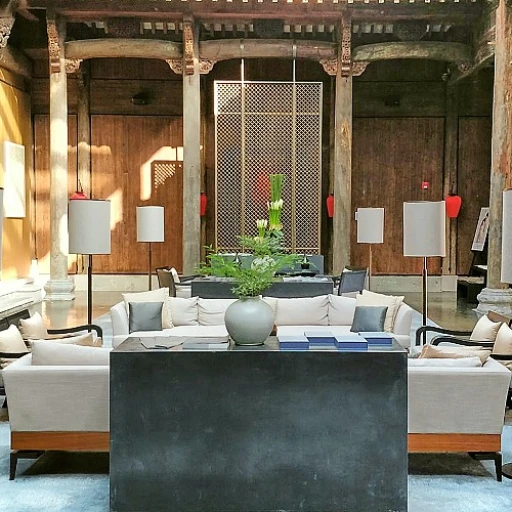

-large-teaser.webp)
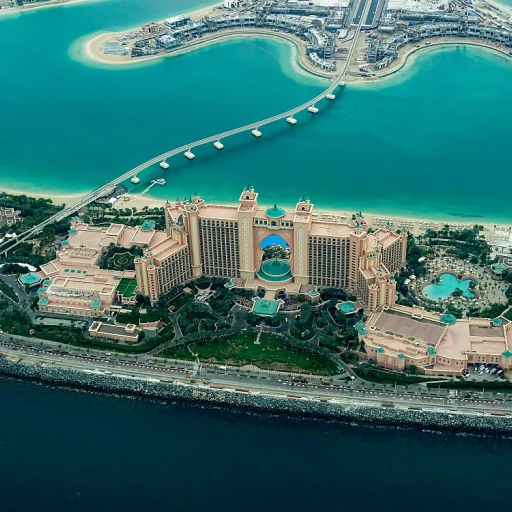
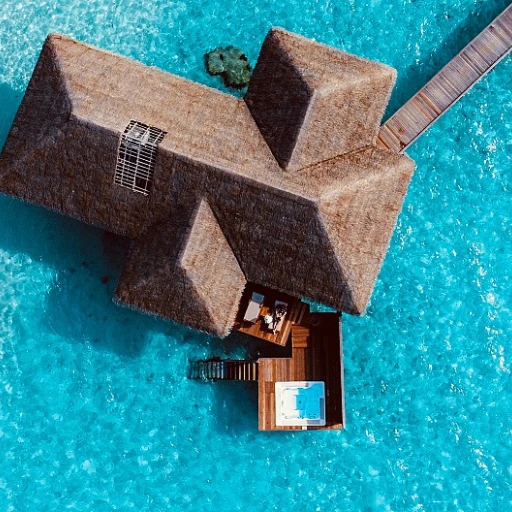
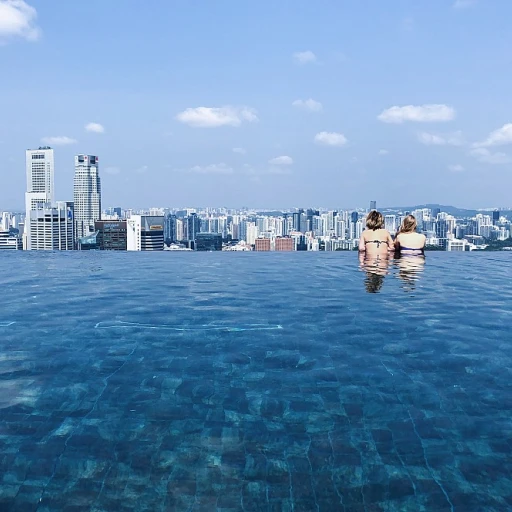
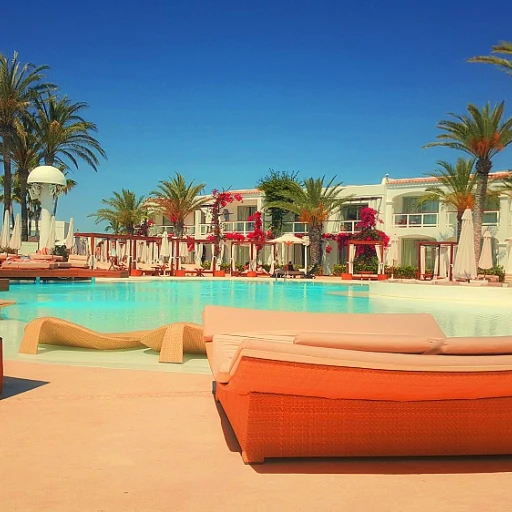

-large-teaser.webp)

